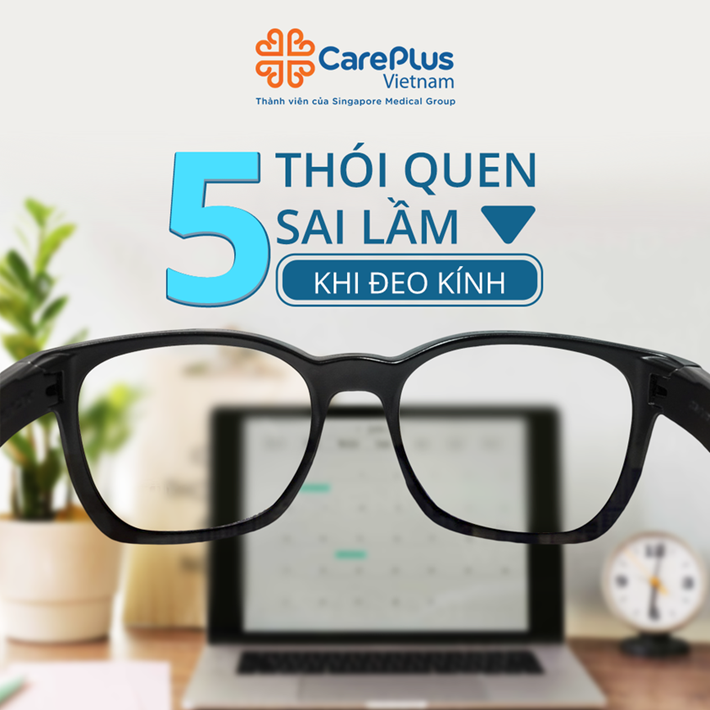5 Wrong Habits of Wearing Glasses & Immeasurable Harms.
Have you ever wondered about the problem of severe nearsightedness and increased degree of improvement despite wearing glasses, have you? At that time, do not rush to blame the glasses you are wearing. The "culprit" that causes the above situation may be due to the way you use your glasses!

4/22/2022 1:28:35 PM
1. Wearing glasses wrong posture
Many people wearing glasses have actions that seem innocuous but cause incalculable harm. Here are 3 wrong glasses positions that you need to avoid:
• The first is to wear glasses down to the nose
Wearing like this causes the refractive error to be affected, to see the object more blurred, the eyes to adjust not well, the risk of increasing myopia faster.
When the glasses are lowered, the eyes look up, causing the eyelids to droop and lose their natural beauty.
• Second, take off your glasses and put them on with one hand
Wearing glasses, removing glasses with one hand causes the glasses to go into the temples unevenly, the frames will gradually warp and expand. The wide glass will also cause it to fall, affecting vision.
• The third is to wear glasses on the head
Many people when wearing glasses sometimes put glasses on their heads to look fashionable, but actually this action is not good. The lenses are easily scratched, the frames are also easy to open and even if you are not careful, the glasses will fall.
2. Wearing the wrong glasses
If you wear glasses that are heavier than the true nearsightedness, your eyes will have the phenomenon of looking at objects spinning, and your head will be dizzy.
If you wear glasses that are lighter than your myopia, your eyes must adjust more to focus on seeing clearly, which will lead to an increase in myopia in the long run.
In addition to myopia, wearing the wrong PD glasses will also lead to headaches, eye fatigue, and unclear vision.
Wearing for a long time also leads to strabismus. Therefore, when cutting near-sighted glasses, you must absolutely pay attention to this number.
3. Wearing glasses with others
The eye is a contagious organ, so if you wear glasses of someone who has an eye disease or has a virus like corona, there is a very high risk that you will get sick.
4. Wearing glasses at the wrong frequency
Glasses are devices that help the eyes to adjust well, achieve maximum vision as usual. If you are nearsighted without wearing glasses, your eyes will have to adjust more, your eyeballs will increase, and you will lose the ability to dilate for a long time.
5. Not paying attention to cleaning the glass
There are people who wear glasses for a very long time without having their vision checked. Scratched, yellowed lenses and blue moldy frames, peeling paint.
If this situation is happening, you are facing two risks:
One is poor eyesight, scratched glasses make the eyes blurry, uncomfortable, even at risk of causing amblyopia.
The second is the problem of skin and aesthetics. The frames of unknown origin worn for a period of time will have peeling paint, metal frames with rust, green mold, it can cause allergies or other serious diseases for your skin.
Customers wishing to register for eye exams at CarePlus, please inbox or book an appointment at https://careplusvn.com/vi/khoa-mat